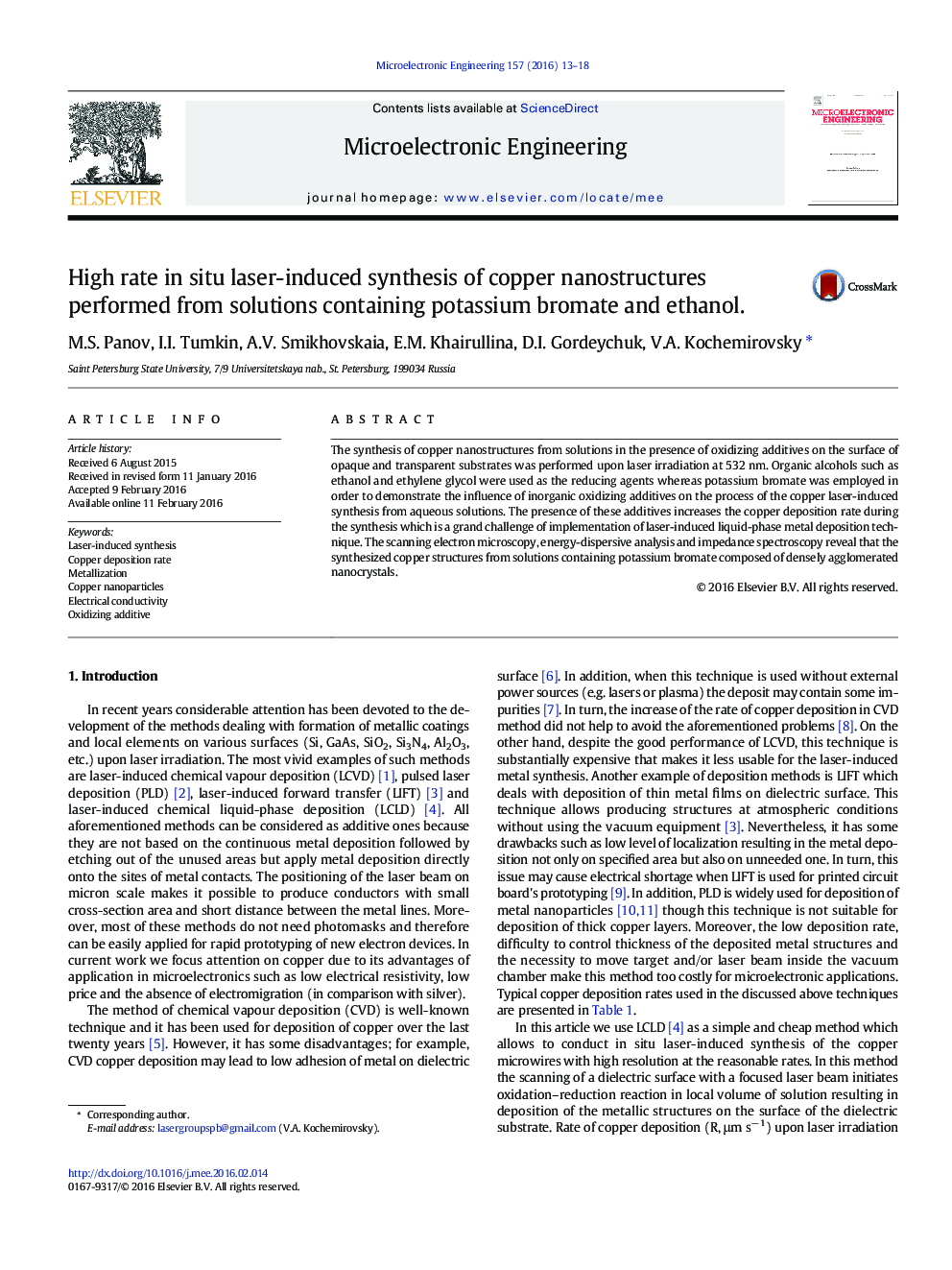| کد مقاله | کد نشریه | سال انتشار | مقاله انگلیسی | نسخه تمام متن |
|---|---|---|---|---|
| 542010 | 1450324 | 2016 | 6 صفحه PDF | دانلود رایگان |
• High rate laser-induced deposition of copper nanostructures was performed.
• The presence of low-molecular-weight alcohols and potassium bromate additives increases the copper deposition rate.
• The deposited copper structures composed of densely agglomerated nanocrystals.
• A continuous high-quality copper-containing nanostructure was deposited on POLIKOR VK-96 at the scanning speed of 10 μm s− 1.
• A continuous highly conductive copper nanostructure was deposited on oxide glass at the scanning speed of 25 μm s − 1.
The synthesis of copper nanostructures from solutions in the presence of oxidizing additives on the surface of opaque and transparent substrates was performed upon laser irradiation at 532 nm. Organic alcohols such as ethanol and ethylene glycol were used as the reducing agents whereas potassium bromate was employed in order to demonstrate the influence of inorganic oxidizing additives on the process of the copper laser-induced synthesis from aqueous solutions. The presence of these additives increases the copper deposition rate during the synthesis which is a grand challenge of implementation of laser-induced liquid-phase metal deposition technique. The scanning electron microscopy, energy-dispersive analysis and impedance spectroscopy reveal that the synthesized copper structures from solutions containing potassium bromate composed of densely agglomerated nanocrystals.
Figure optionsDownload as PowerPoint slide
Journal: Microelectronic Engineering - Volume 157, 1 May 2016, Pages 13–18
